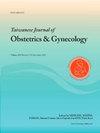子宫内膜癌:第二部分。子宫高级别浆液性癌的综合治疗(临床一期)
IF 2
4区 医学
Q2 OBSTETRICS & GYNECOLOGY
引用次数: 0
摘要
由于现代分子病理学与传统临床病理学相结合,用于诊断和分类EC,治疗显然转向更精确的分子引导或靶向治疗,已在第一部分(2022)中进行了回顾。目前的综述是第二部分,描述了一名66岁的子宫高级别浆液性癌(HGSC,刮宫后诊断)患者的复杂临床病程的既往病史(临床病程I),由于没有任何残留的恶性肿瘤,该患者于2019年2月接受了机器人分期手术治疗,没有额外的术后辅助治疗(理由和争议问题1-5)。2020年12月,包括阴道袖口、肝脏、肾上腺和肺转移在内的多个部位复发。在2021年1月至4月期间,次优的细胞减少手术和6个周期的紫杉醇-卡铂方案几乎完全缓解(理由6,7和有争议的问题6,7)。然而,这种模棱两可的临床情况使后续的治疗陷入混乱。使用正电子发射断层扫描/磁共振成像(MRI)或计算机断层扫描(CT)不仅作为一种有价值的工具来检测隐匿的转移性病变,而且还为不确定的临床诊断提供了答案,提供了额外的治疗(理据8-10和争议问题7-9)。尽管最初的诊断是早期疾病(无残留肿瘤),但本病例突出了子宫HGSC的侵袭性,并且医院购物使得临床过程更加复杂。第二部分(临床课程一)探讨了从“A”和“B”医院的初始诊断和初始治疗到“C、D、E、F”医院对复发性疾病的后续管理的第一个过程,包括临床课程一的基本原理和争议问题。本文章由计算机程序翻译,如有差异,请以英文原文为准。
Endometrial cancer: Part II. Multimodality treatment of uterine high-grade serous carcinoma (clinical course I)
Endometrial cancer (EC) is the most frequently diagnosed gynecological malignancy with rapid growth of incidence in the high-income countries and Taiwan. Since the integration of modern molecular pathology into traditional clinico-pathology for the diagnosis and classification of EC, the treatment is apparently switched to more precise molecular-guided or -targeted therapy, having been reviewed in the part I (2022). The current review is the part II describing the previous history (clinical course I) of the complex clinical course occurred in a 66-year-old woman with uterine high-grade serous carcinoma (HGSC, post-curettage diagnosis), who was treated with robotic staging surgery without additional postoperative adjuvant therapy due to absence of any residual malignancy in February 2019 (Rationales and controversial issues 1–5). Recurrences at the multiple sites, including vaginal cuff, liver, adrenal and lung metastases occurred in December 2020. Suboptimal cytoreductive surgery and following 6 cycles of paclitaxel-carboplatin regimen between January and April 2021 achieved nearly complete remission (Rationales 6,7 and controversial issues 6,7 for the first recurrence). However, this equivocal clinical situation made the following treatment in confusion. Using positron emission tomography/magnetic resonance image (MRI) or computed tomography (CT) not only serving as a valuable tool for detecting occult metastatic lesions but also giving an answer for uncertain clinical diagnosis provided the additional therapy (Rationales 8–10 and Controversial issues 7–9). This case highlights an aggressive nature of uterine HGSC, even though the initial diagnosis was an early-stage disease (no residual tumor) and the hospital shopping makes the clinical course much complex. This part II (Clinical course I) has explored the first journey from the initial diagnosis and initial treatment at the hospital “A” and “B” to the subsequent management of the recurrent disease at the hospitals “C,D,E,F”, including the rationale and controversial issues in the clinical course I.
求助全文
通过发布文献求助,成功后即可免费获取论文全文。
去求助
来源期刊

Taiwanese Journal of Obstetrics & Gynecology
OBSTETRICS & GYNECOLOGY-
CiteScore
3.60
自引率
23.80%
发文量
207
审稿时长
4-8 weeks
期刊介绍:
Taiwanese Journal of Obstetrics and Gynecology is a peer-reviewed journal and open access publishing editorials, reviews, original articles, short communications, case reports, research letters, correspondence and letters to the editor in the field of obstetrics and gynecology.
The aims of the journal are to:
1.Publish cutting-edge, innovative and topical research that addresses screening, diagnosis, management and care in women''s health
2.Deliver evidence-based information
3.Promote the sharing of clinical experience
4.Address women-related health promotion
The journal provides comprehensive coverage of topics in obstetrics & gynecology and women''s health including maternal-fetal medicine, reproductive endocrinology/infertility, and gynecologic oncology. Taiwan Association of Obstetrics and Gynecology.
 求助内容:
求助内容: 应助结果提醒方式:
应助结果提醒方式:


